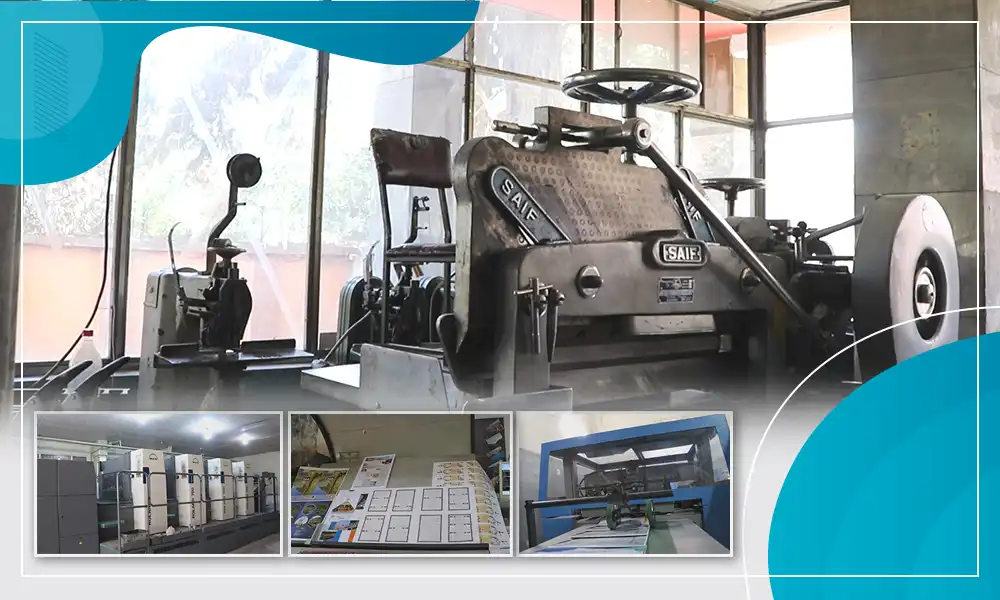KABUL (Pajhwok): Some print media outlets have resumed their operation after two years of the fall of the republic regime when majority of the media outlets shut their offices.
According to the information from the Afghanistan Independent Journalists Union (AIJU), before regime change in the country 79 print media outlets were operating but after regime change all of them stopped their operation.
In the past one year, the AIJU, said 42 print media outlets resumed their operation out of which nine are private outlets while the remaining are state-run outlets.
Abdullah Tatar, director Anis Daily, told Pajhwok Afghan News after regime change their operation stopped for some time but currently they print their newspaper once in a month.
He said in the past one year the situation had improved and currently they printed the newspaper two times in a day. Each time they print 1,000 newspapers which are distributed in government institutions, universities, embassies and dispatched to some provinces.
He said their online operation was also functional.
According to Tatar, the context of Anis Daily reflected upon research, education, politics, culture, society and literature and most of its readers are youth.
When asked when Anis Daily will start its daily printing, he said: “Efforts are underway in this regard and promises had been made that this newspaper will by daily printed, but due to some problems which still existed our daily printing had not started and we hope that the daily printing will swiftly begin.”
He asked local officials to pay serious attention to the print media development.
Naik Mohammad Naikmal, director Kabul Times Daily, said: “When the Islamic Emirate of Afghanistan (IEA) took over our printing operation was stopped but when the situation had improved we have printed the newspaper once in a week, but currently we have two times printing in a week and each time we print 1,000 newspapers and provide online service as well.”
He said the Kabul Times Daily is an English newspaper and its context reflected upon social, political and economic issues.
Naikmal said in the past the newspaper was printed in eight pagers but now it reduced to four pages in order to encourage readers.
When asked why the newspaper is printed two times in a week, he said: “We have to book our turn in the printing house.”
He said: “Another problem why it is not printed every day is that there is an issue with the transfer of paper. We have not used the paper that is produced in Afghanistan yet, because there are some problems in this area. There are no technical problems.”
Mawlavi Mohammad Nabil, head of the Daily Newspapers Department director at the Ministry of Information and Cultural Affairs, said Kabul Times Daily, Shariat, Anis and Hiwad are operating in Kabul while in provinces the Information Departments print magazines.
He said: “Before the victory of the Islamic Emirate of Afghanistan (IEA), the content of these newspapers was on social, economic, and various other topics, and after the IEA takeover there have been positive changes in the content of these newspapers.”
He said the readers of these newspapers are shopkeepers, youth, firms,, NGOs, businessmen, government and embassies employees.
He said the number of daily newspapers printing had surged from 800 to 1000 and in the future it would further increased to 2,000.
According to Mawlavi Nabil, the technical issue and lack of human resources were hurdle that these newspapers are dispatched to the provinces.
He said: “People and officials are to be blamed for not paying attention to the promotion of newspaper, the culture of local newspapers reading had declined and people were more interested in foreign media.”
He asked concerned officials to not only pay attention to state-run daily newspapers but also to private dialy newspapers to ensure their smooth operation.
Meanwhile the AIJU Head Hujatulllah Mujadidi said during the last years of republic regime with the declining reading interest of newspapers, the number of print media outlets also reduced.
He said the AIJU facts and figures showed that 79 print media outlets, including daily, weekly and magazines, were operating before regime fall, but after the republic regime fall all of these media outlets stopped operation.
Mujadidi said: “Fortunately, 42 print media outlets, including nine private media outlets, operate nationwide during the past two years.”
He hoped that with the growth of book reading culture and settlement of media related problems, some media outlets would resume their operation.
nh
Views: 108
